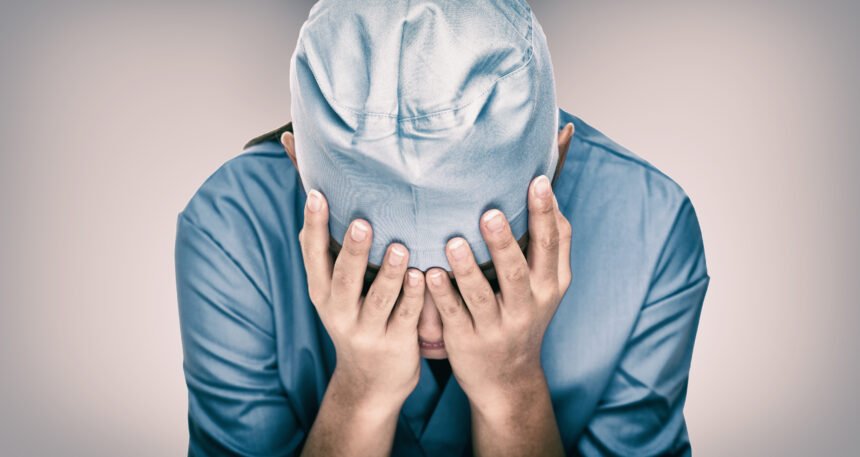According to the International Labour Organization, approximately 2.78 million people globally succumb to work-related accidents or diseases each year.
The healthcare sector can be especially hazardous. Over 1,000 healthcare workers die from HIV alone very year.
Healthcare workers face a multitude of safety risks in their daily work environments. Exposure to infectious diseases is a primary concern, as healthcare settings often involve close contact with sick individuals and bodily fluids. Additionally, workplace violence poses a significant threat, with healthcare workers experiencing high rates of verbal and physical abuse from patients, visitors, or even colleagues. These incidents can lead to injuries, trauma, and long-term psychological distress among healthcare professionals, affecting their overall well-being and job satisfaction.
Furthermore, ergonomic hazards such as lifting heavy patients or awkward postures during procedures can result in musculoskeletal injuries. Repetitive tasks and prolonged standing can also contribute to chronic pain and fatigue among healthcare workers. Inadequate staffing levels and high workload add to the risk, potentially compromising patient safety and increasing the likelihood of errors or accidents. Addressing these safety risks requires comprehensive risk assessments, implementing appropriate safety protocols, providing training on infection control and violence prevention, and fostering a supportive work environment that prioritizes the health and safety of healthcare workers.
This statistic underscores the need for employers to prioritize the implementation of robust safety measures to safeguard their workforce and avoid compensation claims.
In this guide, we will delve into key strategies and best practices to ensure safe working conditions for your employees.
Comprehensive Risk Assessment
Before embarking on any safety initiatives, it’s crucial to conduct a comprehensive risk assessment of your workplace. This involves identifying and evaluating potential hazards across all aspects of your operation, including machinery, equipment, work processes and environmental factors.
Engage employees at all levels in this process to gain valuable insights from those directly involved in day-to-day tasks. By thoroughly understanding the risks found in your workplace, you can develop targeted safety measures to mitigate these hazards effectively.
You will also foster a culture of care and a working environment in which your employees can feel confident to conduct their daily tasks knowing their safety is a top priority within the organization.
Rigorous Safety Training
Equip your staff with the knowledge, skills and awareness necessary to navigate workplace hazards safely.
Provide comprehensive safety training sessions covering a wide range of topics, including proper equipment usage, emergency procedures, hazard recognition and personal protective equipment protocols.
Ensure that training programs are tailored to the specific needs of different roles within your organization and that they are delivered regularly to all employees, including new hires and long term employees who may need their health and safety knowledge refreshed.
Implement Safety Procedures
Establishing clear and effective safety procedures is essential for maintaining a safe working environment, especially in light of new restrictions from covid-19.
Develop detailed protocols and guidelines for various tasks and scenarios, be that for an office environment or a more industrial workplace. These should cover areas such as working at heights, operating machinery and responding to emergencies. Make these procedures easily accessible to all employees through training materials, signage and digital resources.
Regularly review and update safety procedures to reflect changes in regulations, technology, and best practices.
Regular Equipment Maintenance
Faulty or malfunctioning equipment can pose significant risks to employee safety. Make sure to implement a proactive maintenance program to ensure that all machinery, tools and equipment are properly serviced and maintained on a regular basis.
Schedule routine inspections by qualified technicians to identify and address potential issues before they escalate into safety hazards. Your employees should also be encouraged to report any problems with equipment promptly, and provide clear procedures for addressing maintenance concerns.
Monitor for Gas Leaks
Gas leaks present a serious threat to workplace safety, with the potential for fires, explosions and health hazards. Install and maintain gas detection systems to continuously monitor for the presence of hazardous gases such as carbon monoxide, methane, and hydrogen sulfide.
Conduct regular testing, gas boiler servicing and calibration of gas detection equipment to ensure accurate and reliable performance. You should have clear procedures in place for responding to gas alarms, including evacuations, ventilation and emergency shutdowns.
Conduct Air Quality Tests
Indoor air quality can have a significant impact on employee health, comfort and productivity. To ensure safe working conditions for your staff, you should regularly assess air quality within your workplace to identify potential contaminants, pollutants and allergens.
Conduct comprehensive air quality tests in areas where employees are exposed to dust, fumes or other airborne hazards. To improve air quality in your staff’s surroundings, find ways of increasing ventilation, filtration and air circulation as needed to maintain a healthy and comfortable work environment.
Closing Thoughts
Prioritizing safety in the workplace is not just a legal obligation—it’s a moral imperative. By investing in comprehensive risk assessment, rigorous training, and proactive safety measures, employers can create a culture of safety where employees feel valued, empowered, and protected.
Remember, safety is everyone’s responsibility, from frontline workers to senior management. By working together and fostering a culture of safety awareness and accountability, we can ensure that every member of our team returns home safely at the end of the day.









